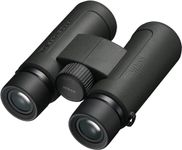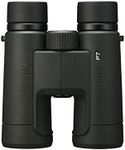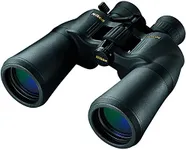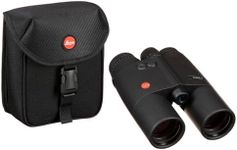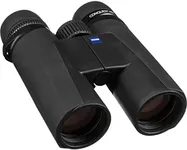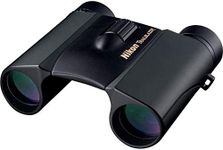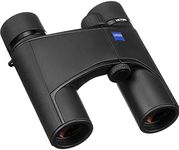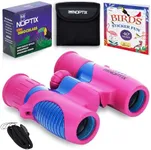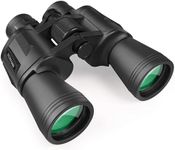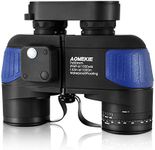Buying Guide for the Best Lightweight Binoculars
Choosing the right lightweight binoculars can greatly enhance your outdoor experiences, whether you're bird watching, hiking, or attending a sports event. The key is to find a pair that balances weight, magnification, and clarity to suit your specific needs. Here are some important specifications to consider when selecting lightweight binoculars and how to navigate them to find the best fit for you.MagnificationMagnification indicates how much closer an object will appear compared to the naked eye. For example, 8x magnification means the object will appear eight times closer. Higher magnification (10x or more) provides more detail but can be harder to stabilize and may reduce the field of view. Lower magnification (7x or 8x) offers a wider field of view and is easier to keep steady, making it ideal for general use and beginners. Choose based on your activity: higher for detailed viewing like bird watching, lower for broader landscapes or sports events.
Objective Lens DiameterThe objective lens diameter, measured in millimeters, determines how much light enters the binoculars. Larger diameters (e.g., 42mm) gather more light, providing brighter images, especially in low-light conditions. However, they also add weight. Smaller diameters (e.g., 25mm) make the binoculars more compact and lightweight but may not perform as well in dim lighting. Consider where and when you'll be using the binoculars: larger diameters for dawn or dusk, smaller for daytime activities.
Field of ViewField of view (FOV) is the width of the area visible through the binoculars, usually measured in feet at 1,000 yards. A wider FOV allows you to see more of the scene without moving the binoculars, which is beneficial for tracking moving objects like birds or athletes. Narrower FOV provides more detail but requires more precise aiming. If you need to follow fast-moving subjects, opt for a wider FOV; for stationary or slow-moving subjects, a narrower FOV might be sufficient.
WeightWeight is a crucial factor for comfort, especially during extended use. Lightweight binoculars typically weigh less than 1.5 pounds, making them easier to carry and hold steady. Heavier models can cause fatigue and may require additional support like a tripod. If you plan to carry your binoculars for long periods, such as on hikes or bird-watching excursions, prioritize lighter models to avoid strain.
Eye ReliefEye relief is the distance from the eyepiece to your eye while still seeing the full field of view. This is particularly important for eyeglass wearers. Longer eye relief (15mm or more) allows for comfortable viewing with glasses, while shorter eye relief may require removing them. If you wear glasses, look for binoculars with longer eye relief to ensure a clear and comfortable viewing experience.
Prism TypeBinoculars use prisms to correct the orientation of the image. There are two main types: roof prisms and porro prisms. Roof prisms are more compact and lightweight, making them ideal for portability. Porro prisms, while bulkier, often provide better depth perception and a wider field of view. If portability and weight are your main concerns, go for roof prisms. If image quality and depth are more important, consider porro prisms.
Waterproofing and FogproofingWaterproof and fogproof binoculars are sealed and filled with inert gas to prevent moisture from entering and fogging up the lenses. This is essential for use in wet or humid conditions. If you plan to use your binoculars in varying weather conditions or near water, ensure they are both waterproof and fogproof to maintain clear visibility and protect your investment.
